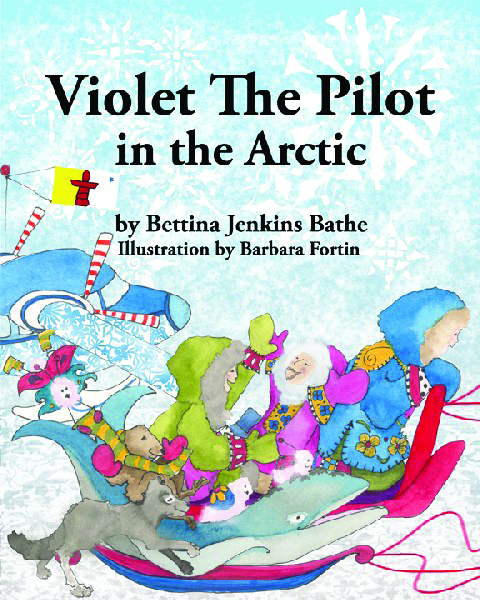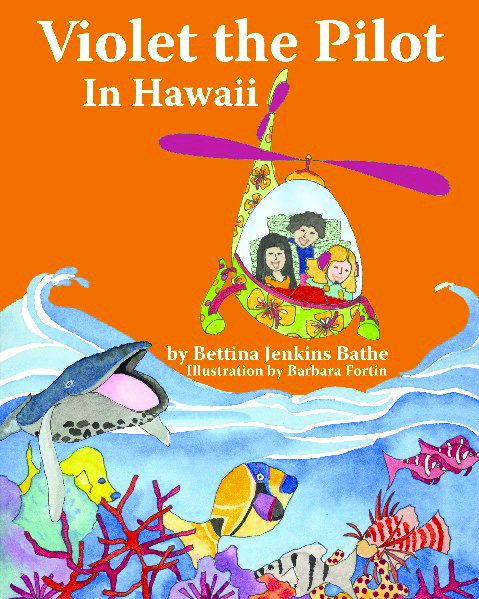
If you are a successful entrepreneur, there’s a high probability that at some point in time, you are going to be tempted or persuaded to write a book. Either you or those around you will come to the conclusion that you have an important story or valuable wisdom that you need to impart with the world. But then what? If you don’t already have a publisher secured, get ready for a long, frustrating, and expensive road. Lucky for you, I have been through it all and have some invaluable advice I am happy to share.
I published my first book in 2003. As lover of aviation in the truest sense, I had spent a vast majority of my adult life as a pilot — flying everything from Cessnas to DC3s to King Airs — and as my career progressed, I had been toying for some time with the idea of writing a children’s book series about a female pilot. I wanted to truly understand my audience, so I would fly over different locales with my children and listen to their observations, which I would later incorporate into the stories so that they captured that ineffable perspective of childlike wonder and exploration. The series would be titled “Violet the Pilot,” and take readers all around the world on educational adventures.


I then began meeting with publishers and pitching my idea. Much to my chagrin, they all “loved” the concept, but still wanted to hire in-house writers to actually write the books. Basically, they wanted to take my baby from me and pay me pennies on the dollar so that someone else could raise it. “Sure you’re an accomplished pilot, but leave the book-writing to professionals,” they said. (Let this also be a lesson that no matter how successful you are in one field, people will still try and pigeonhole you to one talent.) So, I figured if they didn’t need me, then I didn’t need them. I would go it alone.
 I started doing my homework. I went online and researched self-publishing and found reputable literary programs near me. It’s very important that you study books in your space; whether it’s a self-help book, a romance novel, or a children’s book like mine, you want to fully understand the mechanics of how to write your genre. Then I trademarked my concept — an integral step if you have a unique intellectual property like mine — and started searching for an illustrator. I scoured the internet, academic world, and publishing circles for a talented illustrator capable of capturing what I was looking for in Violet: a whimsical interpretation of my daughter. (This process taught me that illustrators always want to own the characters they draw, so if you have illustrations, be sure to structure an agreement that gives you ownership to not just the property, but the likeness as well.)
I started doing my homework. I went online and researched self-publishing and found reputable literary programs near me. It’s very important that you study books in your space; whether it’s a self-help book, a romance novel, or a children’s book like mine, you want to fully understand the mechanics of how to write your genre. Then I trademarked my concept — an integral step if you have a unique intellectual property like mine — and started searching for an illustrator. I scoured the internet, academic world, and publishing circles for a talented illustrator capable of capturing what I was looking for in Violet: a whimsical interpretation of my daughter. (This process taught me that illustrators always want to own the characters they draw, so if you have illustrations, be sure to structure an agreement that gives you ownership to not just the property, but the likeness as well.)
The next step was finding an editor. In publishing, good editors are truly invaluable. You want to find one who not only brings experience, but truly understands your vision. Once I had settled on the right one, we began the crucial, painstaking process of actually crafting the first book. This meant illustration, proofing, revisions, re-writes, and developing a cover design. This is where it is important to point out the obvious truth of self-publishing. It’s not cheap. And regardless of how much cash you have, you’ll certainly feel leery about pumping money into something with no guarantee of an ROI.

That’s where finding a distributor comes in. If you Google “How to self publish a book,” you will find countless independent publishers. You can go entirely on your own (which is a tough process, especially in my field), or, do what I did, and find a publisher you like and work out a share of the profits. You want make sure you receive your fair share, and without a literary agent this can be tough, so you need to be a skilled negotiator. You also want to maintain as much control as possible. (I wasn’t crazy about the level of control I had with my first publisher, so I found a different one and structured a better deal for the rest of the books in the series.)
You then need to begin devising a marketing campaign. (Rejoice if you’ve made it this far, as this is where you can finally start to recoup some of your investment.) For macro-marketing, contact TV and radio stations and create a website and social media profiles for your book. Then, pinpoint your target audience and figure out how to best reach them. I phoned schools, libraries, and aviation companies to try and connect with both children and my industry. Next I started pre-selling signed copies. I can’t stress how important this is, as you can recoup a substantial portion of your costs up front. Contact bookstores to do signings wherever else you can; it’s great revenue.

After that, it’s largely beyond your control. Your baby is off in the world, and all you can do is be a proud parent, promote it as best you can, and prey it’s a hit. I got lucky when Violet took off, as I was able to recoup my investment and continue the series (now we are in the process of turning it into a TV show), but there are no guarantees. Publishing is a tough industry, and self-publishing can be a scary process. If you fail, it only hurts more because you poured everything into it. But when your book is actually successful, it’s all that more gratifying. Because you truly did it on your own. And isn’t that what being an entrepreneur is all about?
 With over 20 years of flight experience, Bettina Bathe is an aviator in every sense of the word. An accomplished children’s author, she is the creator of Violet the Pilot, and has self-published four books in the beloved children’s travel series, which she’s currently adapting for television. She currently lives in Calgary, Canada with her family. VioletThePilot.com
With over 20 years of flight experience, Bettina Bathe is an aviator in every sense of the word. An accomplished children’s author, she is the creator of Violet the Pilot, and has self-published four books in the beloved children’s travel series, which she’s currently adapting for television. She currently lives in Calgary, Canada with her family. VioletThePilot.com

